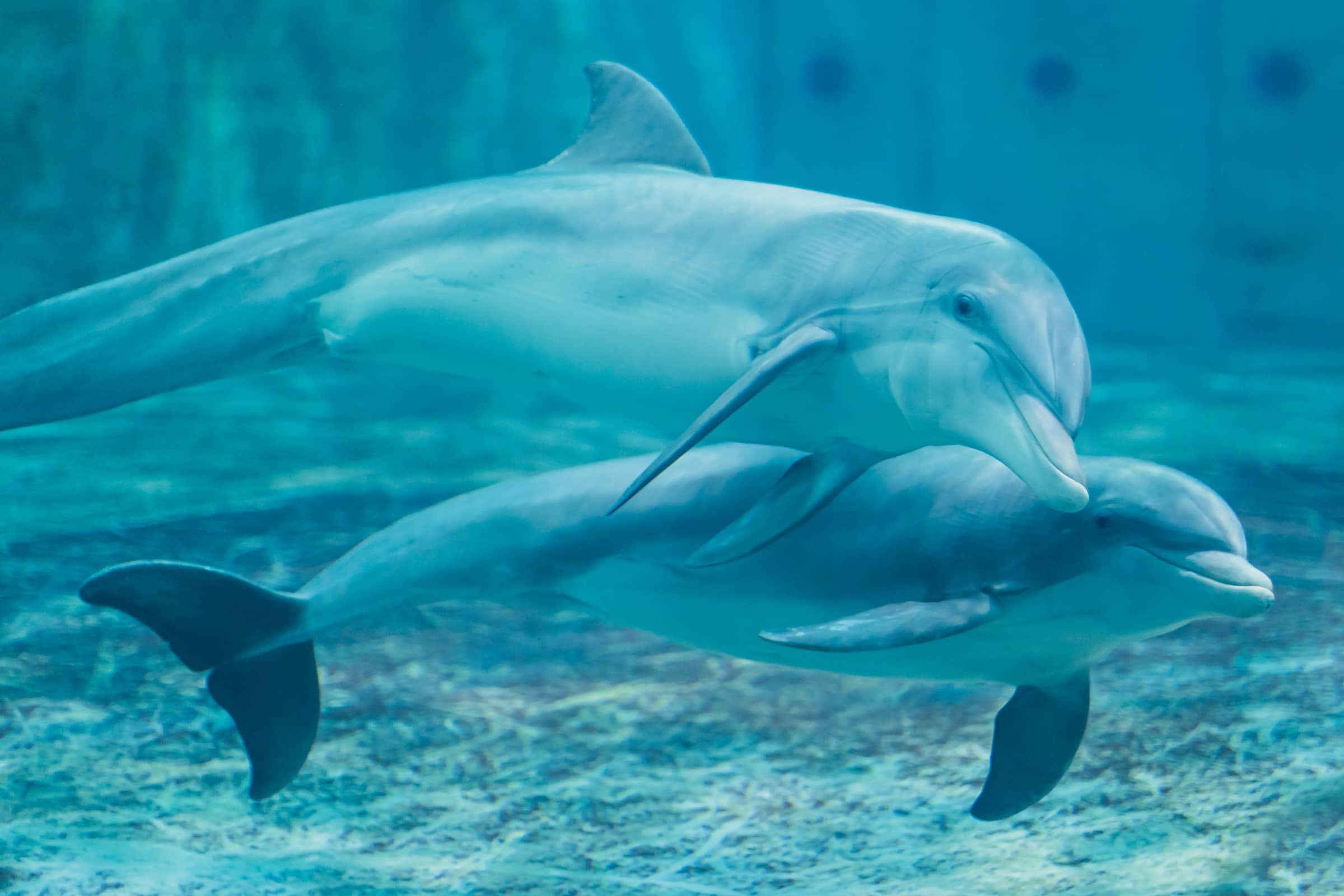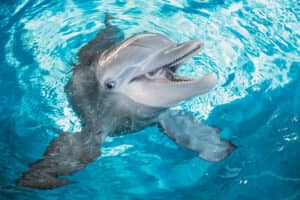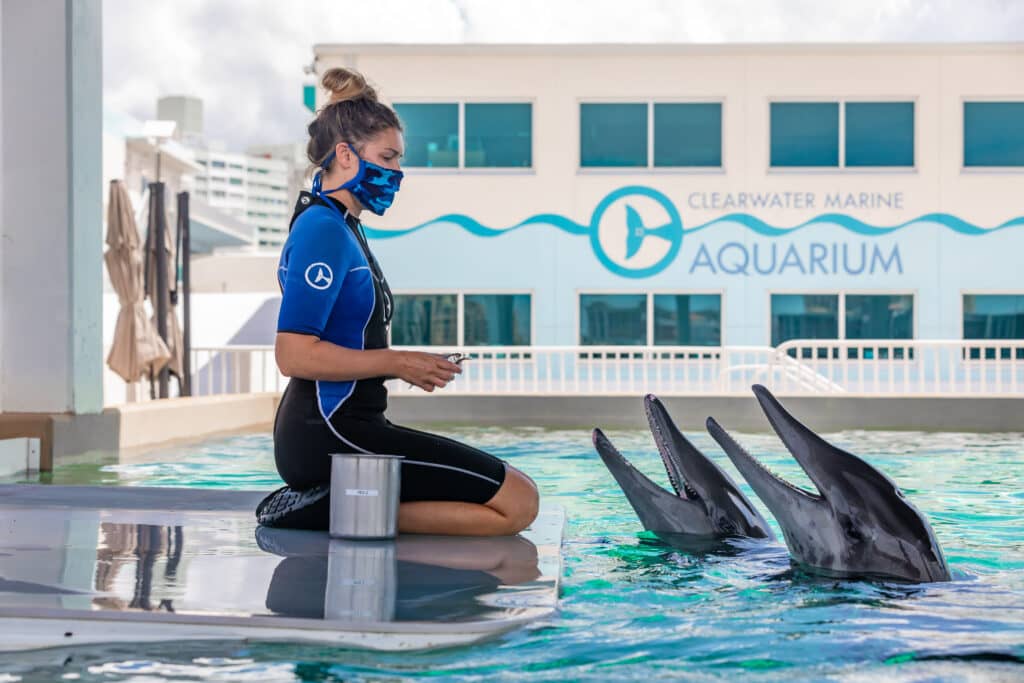Report exonerates Clearwater Aquarium in dolphin deaths

It took an independent team of scientific experts four months and 42 detailed pages to confirm what Clearwater Marine Aquarium CEO Joe Handy already knew: Aquarium staff were in no way responsible for the deaths of four dolphins in their care.
The full report, released Tuesday, investigated the deaths occurring over a 16-month period, starting in November 2021.

Winter.
That’s when Winter, the facility’s most famous resident bottlenose dolphin, died suddenly from intestinal torsion (a twisted intestine).
It’s important to remember, Handy said, that these are rescue animals, who often suffer from underlying, impossible-to-detect health issues. “We don’t know their histories when they come to us, and they may be sicker than we realize,” he said.
“CMA is the only marine hospital and aquarium in the United States with its entire resident dolphin population composed entirely of stranded, rescued, rehabilitated and non-releasable animals. They all lack the ability to survive in the wild, and as a result these are high-risk patients with a higher mortality rate.”
Handy, who became CEO in October 2022, commissioned the independent investigation.
As a baby, Winter was found wrapped in crab trap ropes, stranded and dying of exposure on a beach. Her tail flukes literally rotted and fell off. Still, she lived at the CMA for 16 years, fitted with a prosthetic tail, and her story became the basis for two popular family movies.
PJ, estimated to be 51 years old (elderly for a bottlenose dolphin), died in October 2022; her hearing loss was so severe that CMA biologists suspected she might be deaf. Since dolphins feed using echolocation, hearing issues can lead to serious consequences. PJ exhibited “seizure-like behavior” and fractured her skull by ramming into an underwater window. She resided in the CMA’s dolphin tank for two years.
Hemingway died in January of this year. His age was estimated at 37. According to the report, the male bottlenose dolphin was notoriously inattentive and unruly, and difficult to “train” for necessary medical examinations. He also suffered from hearing loss.
It was determined that Hemingway, like Winter, perished from intestinal torsion; “Potential risk factors may be chronic, pre-existing gastrointestinal disease, gastrointestinal parasites (common in free-ranging animals but very uncommon in managed care), very large meal after fasting (rare in managed care), or anatomic abnormalities (such as seen in Winter).” He was at CMA for less than three years.
Eight-year-old Rex, a rough-toothed dolphin (smaller than the more common bottlenose species), was also nearly deaf. He died in March, after a bout of pneumonia was thought to be successfully treated, but turned to gastritis and septicemia. He had been a resident for three years.
Following Rex’s death, Handy called for the independent investigation. The participants were dolphin expert Rita Stacey Vondra of the Chicago Zoological Society and the Texas State Aquarium; American College of Zoological Medicine Board-certified (aquatic) veterinarians Lara Croft and Andrew Stamper; water quality expert Paul Cooley and animal welfare lawyer James F. Gesualdi.
Apollo, a 4-year-old bottlenose dolphin, died at the CMA last week, almost to the day that the independent panelists turned in their joint report. Apollo, too, had catastrophic hearing loss. He’d been suffering from gastrointestinal issues, although a cause of death has not been released.
“Based on the assessment,” reads the report summation, “the review team found in nearly all situations, the Clearwater Marine Aquarium veterinary staff and the animal care team appeared to adapt, respond quickly and reasonably to the case presentations, reaching out extensively to appropriate veterinary colleagues and pivoting as the cases evolved. In addition, there were no identified environmental or water quality issues that contributed to their demise.”
“The report,” Handy said, “tells us that our team is doing an incredible job taking care of the medically compromised marine mammals that we’re charged with taking care of. It tells me we can pride ourselves in the jobs that we’ve done in giving them the best lives possible, no matter how long that might be.”
Although the experts found no fault with the CMA’s animal husbandry, they did present a series of recommendations for improving conditions for the animals in captivity, including:
Create a female-led social pod (preferably from a previous stable family structure) to teach newcomers. “It is important to note that it is essential that individual dolphins have companionship with other dolphins as well as a healthy social group.”
Develop a long-term population management plan that includes a balance of dolphins born in managed care and stranded dolphins.
Refine and prioritize special care and training to account for dolphin hearing loss/deafness; consider baseline and periodic dolphin auditory exams.
Cetacean health is a team process with everyone responsible in the process, and the responsibility for an animal’s health and well-being is shared by all. There should be a culture of shared responsibility, though veterinary medical decisions are ultimately a veterinary responsibility (especially under the Animal Welfare Act).
Veterinary responsibilities should be focused on medical care, rather than too many administrative and other tasks (e.g. Registrar, Veterinary Clinic/Hospital Manager). Veterinarians should focus on medical care while the animal care team focuses on husbandry.
A nutritionist consultant should be considered as an important subspecialty and may be able to offer recommendations for animals experiencing gastrointestinal issues.
Continue wild bird management and consider a falcon show as a possible addition, as live predatory birds are the most effective way to discourage birds. Also consider antiavian window dressings to glass to prevent collisions.
“Many of the recommendations are ideas that our staff has been working on and researching to incorporate into animal health, environment and culture already,” Handy said.
Current cetacean residents at the Clearwater Marine Aquarium, all rescue animals (and all with health issues), are Hope (age 12), Nicholas (20), Izzy (7), Rudy (5) and Rosie (juvenile).
Rudy and Rosie are rough-toothed dolphins; the others are bottlenose dolphins.
“I am proud of the care that we provide for the animals we have for the brief time that they’re with us, recognizing that they’re only with us for a relatively short period of time,” Handy said. “It is our calling to ensure that they live happy and healthy lives so that we learn from them, and so we can provide better care and teach other sister institutions on ways to care for these animals.
“And equally as important, I am honored to work alongside one of the most passionate, talented and skilled teams of individuals that bring all of themselves to all of their work.”

Rough-toothed dolphins Rex and Rudy.








Andrea Smith
June 24, 2023at7:27 pm
Maybe it’s because they aren’t meant to be in a tiny pool. Seems like there’s a reason that no other aquarium keeps their animals. That’s just awful, they keep close to their families. They will look for each other in devastating, they’re mammals for gods sake. We’re basically dolphin kidnapping them.